I’d like to be there. Not yet, of course. But when it’s my time. I can see it in my mind today. Whitey Herzog holding court in a manager’s office in the baseball afterworld. There’s plenty of cold Budweiser, an endless supply of old stories to be told and embellished, and so much laughter that you could hear it coming from the belly of the ballpark in the sky, all the way down to Whitey’s hometown in New Athens, IL.
I’m thinking Mike Shannon is there, and Roger Maris, and Stan Musial, and Mickey Mantle and Casey Stengel. Gussie Busch is growling in his unique voice. Rick Hummel is smiling and wearing his standard newsboy cap. Red Schoendienst has a prime seat, taking it all in. Bob Broeg is roaring as he talks about the time he got off a bus in a special emergency situation, buying those breakfast sandwiches for a hungry Bob Gibson and delivering them to Fenway Park in Boston as Gibby prepared to start Game 7 of the 1967 World Series. Lou Brock, sweet as always. Bruce Sutter, Herzog’s closer in 1982. Darrell Porter and Yogi Berra. Lee Thomas. George Kissell. Hub Kittle.
All of those absent friends. And so many others. So, so many. Because Whitey was – and is – the life of any baseball gathering. Don Denkinger is there. Are you surprised to know that? You shouldn’t be. Back in the day, Whitey reached out to the umpire, who botched that famous call in Game 6 of the 1985 World Series in a mistake that still dogged him many years later. Whitey felt bad for Denkinger. The call likely cost Herzog’s Cardinals a second World Series in four years, but Whitey got over it. He disliked the abuse that Denkinger had to take for one unfortunate call in an otherwise splendid career. So Whitey brought Denkinger to St. Louis, and had him as a special guest for his charitable foundation dinner, paid tribute to Denkinger, and treated him like a friend. Denkinger used to get choked up just talking about Whitey’s incredible kindness.
Here comes Jack Buck and Harry Caray. Have a seat, fellas. Have a cold one. Whitey is telling stories, and he’ll want to hear your stories, and this place ain’t closing. It’s never closing.
I could spend hours writing in the names of all of Herzog’s late friends. But they’re greeting him again. And he’s taking over, in charge of the beer and the stories and all of the great baseball talk that made every visit to Herzog’s office something unique and special and marvelously entertaining. I want to be there again one day, to hang out again. I’ve never been happier in sportswriting than having those hours in Herzog’s inner sanctum, listening to his stories, and his explanations on strategy, and providing details of why he made certain decisions. Oh, it was so much fun. The stories were like walking back into baseball history, and I could go there. You can’t beat that. Amazing.
It was the greatest education I ever received. I’ll always be grateful – and blessed – that I had a chance, as a younger writer, to learn from Earl Weaver, and Herzog, and Tony La Russa, and Schoendienst, and Joe Torre.
I can’t pick a favorite. So don’t ask. But I spent the most time with Herzog and TLR, and those experiences seeped into me in a way that is a permanent and a valuable resource.
Whitey Herzog has passed away at age 92. His death was announced late Tuesday morning by the Cardinals and the Herzog family. Tributes are flowing in from around baseball. The Hall of Fame manager was beloved. Even his baseball “enemies” ”had a soft spot for the White Rat after the battles came to a close. Rival managers like Tom Lasorda and Roger Craig.
I once was seated in Herzog’s office at Busch Stadium after the Cardinals lost a tough game to the Dodgers on a Sunday afternoon, and Lasorda called from the visitor’s clubhouse to rub it in, informing Whitey that he’d screwed up by setting his defense the wrong way, an apparent miscalculation that Lasorda exploited. Or so he claimed. Herzog let loose with a rage of profanity, slammed down the phone, got up from his seat, and informed me that he was about to walk down the hall to kick Lasorda’s ass.
“He’s just mad at me because he did something stupid by pitching to Jack Clark in ‘85, and I second-guessed it in the media,” Herzog said. “He’ll never live it down, so he’s trying to get even.” Herzog giggled and sat back down. End of threat. There would be no manager-on-manager violence in the bowels of the “old” Busch Stadium. The Jack Clark reference does not need to be explained to Cardinals fans. For others, you can find it on YouTube.
Herzog was a Hall of Fame manager. He was one of those rare managers who could take the best parts of his own personality and instill it in his players. His swagger became their swagger. His brashness became their brashness. His baseball mind filled them with advanced knowledge, presented in an easily understood way. And they learned to think – naturally – the way Herzog taught them. He emboldened shy players who lacked confidence. He could work with wild-child players to calm them down and make them better than they ever imagined. It didn’t always work, but Herzog had a helluva batting average. His influence was powerful and profound.
In addition to being a St. Louis institution and a STL baseball icon, and the best storyteller I’ve ever been around, Herzog was the spectacular architect of “Whiteyball,” and that’s what separated him from so many other managers of his time. Seriously. How many managers actually brought a whole new style of baseball to the competition? How many managers could walk into Busch Stadium, see the vast outfield spaces and the fast-track artificial playing surface, and conceive a unique creation that altered the franchise and the competition in the National League?
Let’s think about this. Because we can’t honor him the right way unless we step back and comprehend the full magnitude of what he did as the man and leader who transformed the Cardinals in a way that was dramatic, amazingly successful, and enduring in our baseball hearts and memories?
There are younger people in Cardinal Nation who know what Whiteyball is all about, and what it meant (and still means) to the St. Louis region and the fan base that’s spread out all over the continent. And these younger fans never saw those 1980s teams play. But it didn’t matter. Those teams were so classic and standard-defying, breathtakingly daring and adventurous… the legacy will live on like a baseball endowment.
May I offer the baseball perspective on what Herzog did for the Cardinals and baseball during the peak of his fabulous career? And if you forgive me, I’ll have to quote myself, by using research that I spent hours on as Herzog approached induction into the Baseball Hall of Fame in 2010. I hope you can see a bigger picture about the impact of his career.
Between 1950 and 1979, of the 60 teams that competed in the World Series, 41 ranked in the top five in MLB in slugging, and 50 of the 60 were among the upper half in slugging rankings. If you wanted to win a championship in the 1950s, ’60s and ’70s, you’d better bring the big boys, the brawn and the muscle.
Speedball was a dominant component in baseball in the late 19th century and early 20th century, but Babe Ruth’s home-run prowess all but made the rabbits disappear. Between 1921 and 1974, no MLB team stole as many as 200 bases in a season. That accounts for 942 individual-team seasons.
But by the mid-1970s, more and more major-league games were being played on artificial surfaces in the new stadiums, and the faster track invited innovation and a drastically modified approach.
Herzog brought the rabbits out of hiding.
This is when he created the Herzog brand. The maverick Whiteyball style. Herzog was about to reinvent baseball to fit the era.
Between 1975 and 1989, major-league teams swiped 200 or more bases in a season 21 times. And 10 of the 21 teams were managed by Herzog. No other team reached 200 steals more than three times, but Herzog’s runners did it 10 times.
The theory that you had to slug it out to win championships was tabled. In the 10 World Series played during the 1980s, nine of the 20 teams finished outside of the top 10 in slugging.
When Herzog’s Cardinals won the World Series in 1982, they were 21st in the majors in slugging. His 1985 and 1987 NL champions ranked 19th and 23rd in slugging. But they could pitch and excelled on defense.
Sure, slugging was still part of the 1980s game. The home run didn’t die. Even Herzog went out and acquired Jack Clark, who rocked 22 homers in 1985, and 35 HRs in 1987. But Herzog had the genius to show there was another way to win. He knew there was a way to take advantage of the wide-open spaces at Busch and drive teams batty by beating them inside the dimensions of those deep walls that made it so difficult to wallop home runs.
After major-league baseball had gone through nearly six decades of slow-motion, station-to-station offenses, Herzog brazenly changed the template.
Granted, Herzog wasn’t alone when he initiated the born-to-run philosophy; teams in Oakland, Pittsburgh, Montreal and Anaheim rolled up impressive stolen-base totals. But there were significant differences.
Some of those running clubs were novelties that didn’t stick with the strategy. And others never backed up the baserunning speed with the matching priority of pitching and defense as Herzog did in 1976, when his KC Royals won the AL West over an Oakland team that swiped an astonishing 314 bases that year.
The pretenders weren’t nearly as dependent on speed as Herzog’s clubs. They had more power and could score in other ways. Speed was just one of several assets; with Herzog, it was the entire foundation. He went full gonzo by removing stronger but slower players from his roster, wisely concluding that their power wouldn’t carry that well in the vast dimensions of Busch Stadium II.
It was a radical – but also pragmatic – approach. And if it didn’t work, there was no fallback position. The Cardinals were doomed, and the industry would have laughed at Whitey.
“What Whitey did took a lot of guts,” said Cardinals Hall of Fame second baseman Tommy Herr, who was an important part of those 1980s Herzog teams. “He took on the established way and turned it upside down. He broke the prototype. He led the way. It didn’t always click. But the risk is what made it so gutsy.”
Herr was right; the Cardinals did get bogged down at times, which explains why they finished only fifth overall in the NL in runs between 1981-1989. But Herzog’s squads often made up for slumps by utilizing the speed to cover more defensive ground. That strengthened the run prevention, reduced the opponents’ scoring and made his own pitchers better.
From 1981 through 1989, the Cardinals had the National League’s best winning percentage, won three pennants, and prevailed in the 1982 World Series for their first grand prize since 1967. Herzog put his team speed to work on the defensive end, and on the offensive side. And he put that speed into the heads of his opponents who were rattled by the remarkable athleticism that created hits and extra-base advancement for the Cardinals – and took away hits from opponents.
Stealing bases was an important part of Whiteyball. Stealing can be an overrated tactic because of the outs lost to runners picked off or caught stealing. But Herzog’s teams in KC and STL were smart about it, and calculatingly opportunistic, and benefited from a life of base-stealing crime.
Between 1981 and 1989, Herzog’s St. Louis teams were 549-386 when they had a stolen base in a game. That’s a .587 winning percentage.
That winning percentage grew to .610 when the Cardinals swiped at least two bags in a game.
Between 1976 and 1979, Herzog’s Royals played .615 winning baseball when they swiped a base.
And how entertaining was this? It was an action-adventure baseball movie come to life, produced and directed by Whitey Herzog … not the legendary filmmaker Werner Herzog. That’s why the Cardinals drew 23 million to Busch Stadium in the 1980s after attracting 15 million in the 1970s.
“Whitey was all about, ‘Let’s take charge of this game, let’s make this game as hard as possible for the other team, let’s force the action, put pressure on them, and make them lose,’ ” said baseball historian Bill James, in an interview conducted in the early aughts. “Herzog’s best teams not only won, they won with style; they played an exciting, up-tempo game that was fun for the fans. It turns out that was part of the plan. Herzog always wanted to play a crowd-pleasing game.”
As mentioned, the speed enhanced the defense and the pitching. All of the components worked in unison to form a core strength. And with sprinters such as Vince Coleman, Ozzie Smith, Willie McGee and other blazers at the ready, Cardinals hitters patiently took pitches to give the speed an opportunity to burn opponents. From 1981-89, the Cardinals had the second-lowest strikeout total in the National League. His teams put the ball in play, sprinted their way to hits, and created havoc on the base paths.
In the Whiteyball Way, speed synthesized all of the elements.
From 1981 through 1989, Herzog’s Cardinals:
• Had the NL’s best winning percentage, .538.
• Were No. 1 in onbase percentage.
• Were No. 1 in batting average.
• Led the majors in steals with 1,928 — or 489 more than any other team.
* According to FanGraphs, the 1981-1989 Cardinals had a baserunning metric of plus 110.7 over those years. That was extraordinary; the second best team was at plus 45.7.
• The Cards had the best stolen-base success rate, 76 percent and led the majors in steals of third base (235) and steals of home (15).
• And the running Redbirds were No. 1 in the majors in infield hits, No. 1 in triples and No. 3 in bunt singles.
• Herzog’s Cardinals made the fewest errors, had the highest fielding percentage, turned the most double plays, handled the most total chances and were No. 1 in assists. Those Cardinals were MLB’s highest-rated defensive team from 1981 through 1989; the FanGraphs composite defensive rating had those Cardinals on top by a massive margin. Defensively the gap between the Cardinals and all other teams was almost laughable. That’s how proactively dominant Herzog’s teams were at reducing runs … and reducing an opponent’s morale.
• Herzog’s pitchers were No. 5 in the majors in ERA at 3.51.
• Whitey’s teams – proudly – were dead last in the majors in home runs and slugging percentage from 1981 through 1989. The birds flew much higher — and outraced the distance — of any home run.
And this wasn’t just Busch brashness that would expire away from the 314 area code. The Cardinals had the league’s second-best road winning percentage, and the most road steals, between 1981 and ’89. This style of baseball traveled well, away from the Busch carpet.
Herzog decided to retire in June of 1990. He didn’t think he could motivate players who were building statistical profiles for the approaching free agency. He couldn’t ask them to sacrifice the chance to get a hit to improve their batting average by finessing a sac bunt. It got ugly at the end, and Herzog had enough.
Whiteyball had stalled. He moved on. He never managed again. He knew there was no point to come back and try to perfect something of his own making; that would have been damn near impossible. The game’s business model was changing in St. Louis and other MLB markets, and that realization hit him in 1990. Herzog knew corporation-run teams were layered with business executives, and accountants, and others getting paid to clamp down on payroll. Men in designer suits were running interference in baseball matters, and he couldn’t tolerate it.
There was only one Whitey Herzog. There was only one Whiteyball paradigm. He cannot be replicated. His teams cannot be replicated. And Herzog actually knew this and understood it before anyone else did.
Create your masterpiece and live happy. Trying to recreate that once-in-a-lifetime masterpiece can be stressful and harmful to your health. So go fishing. Do some consulting for the Angels, but live in St. Louis and do the work from your own home and on your terms. Spend time with the grandkids. Eat well. Live well. Take better care of your health, and watch all the baseball that you want — but from the stress-free privacy of your big-screen TV den.
Whitey had this right. One of the greatest and most popular novels in history – “Gone With The Wind ‘’– was the only novel written by Margaret Mitchell. What’s the point of trying to top that? You can’t. It was one of a kind. Why did Harper Lee have to write a sequel to “To Kill A Mockingbird.” Well, she didn’t. She was at peace. There was no yearning for a victory lap.
Same with Whitey Herzog and his bold imagination and fearlessness that made it all possible. Those 1980s Cardinals ran like the wind, and when Herzog left they were gone with the wind. But we can still feel it. We can feel that wind. Ozzie running, and Coleman running, and McGee running. Men in motion, flying around. All of those stolen hits and stolen bases. All of that refined baseball intelligence.
I know I’ll never forget those teams, or the remarkable innovator who developed them. I know I’ll never forget what Whitey did for me to increase my love and knowledge of baseball. And I know I’ll never forget those colorful, rollicking, off-color baseball stories. I’ll hear more of them one day, I just know it. Thank you Whitey. Tonight I’m raising a glass and having a cold one in your honor.
Thanks for reading …
–Bernie
For the last 36 years Bernie Miklasz has entertained, enlightened, and connected with generations of St. Louis sports fans.
While best known for his voice as the lead sports columnist at the Post-Dispatch for 26 years, Bernie has also written for The Athletic, Dallas Morning News and Baltimore News American. A 2023 inductee into the Missouri Sports Hall of Fame, Bernie has hosted radio shows in St. Louis, Dallas, Baltimore and Washington D.C.
Bernie, his wife Kirsten and their cats reside in the Skinker-DeBaliviere neighborhood of St. Louis.



